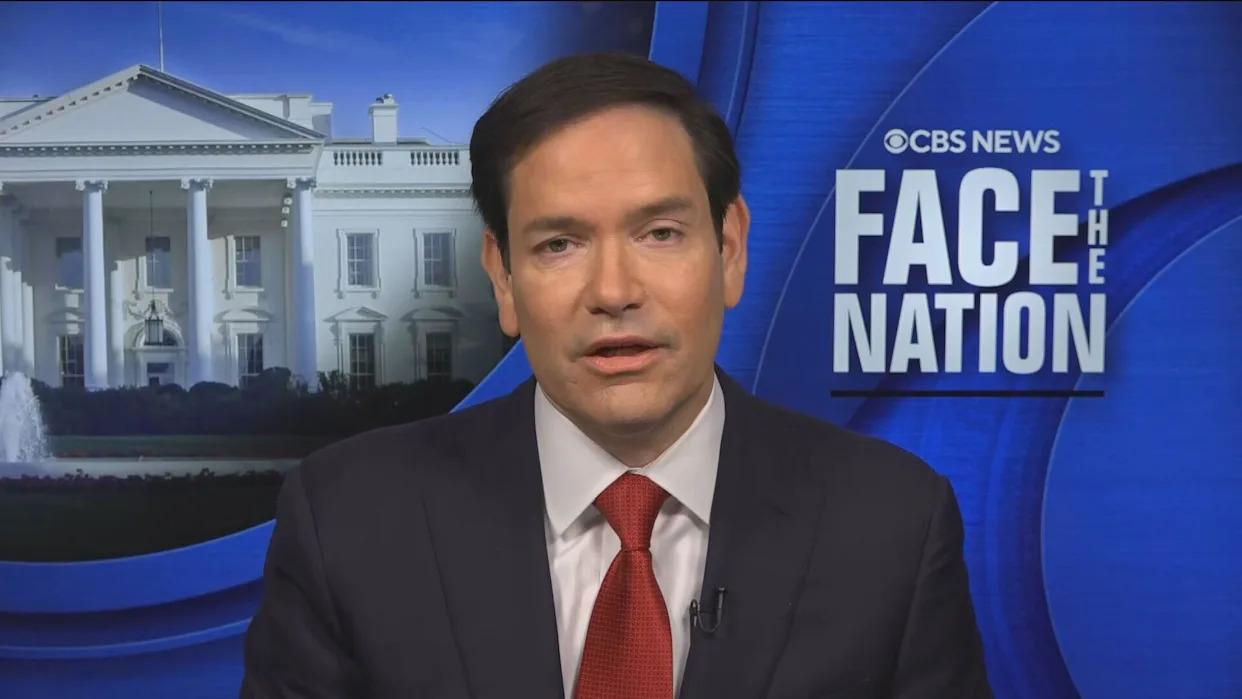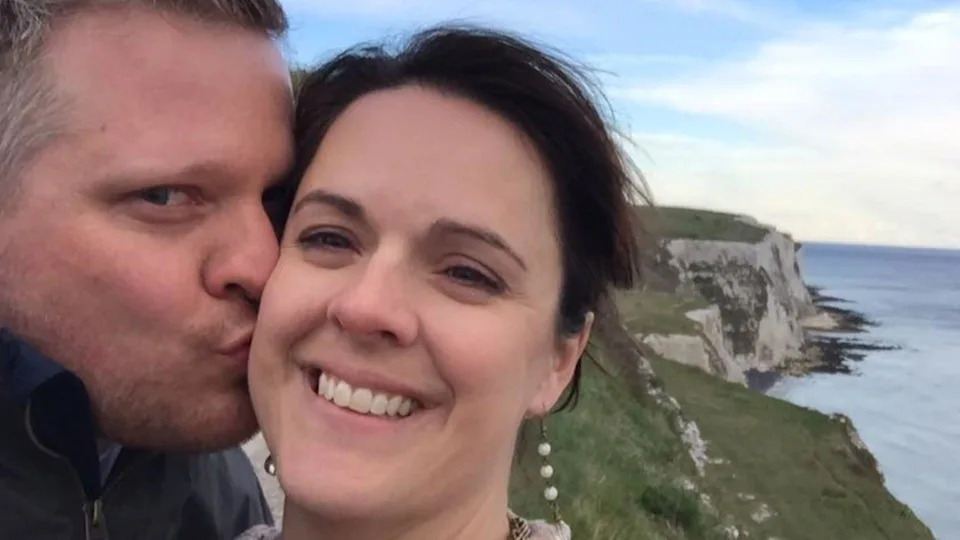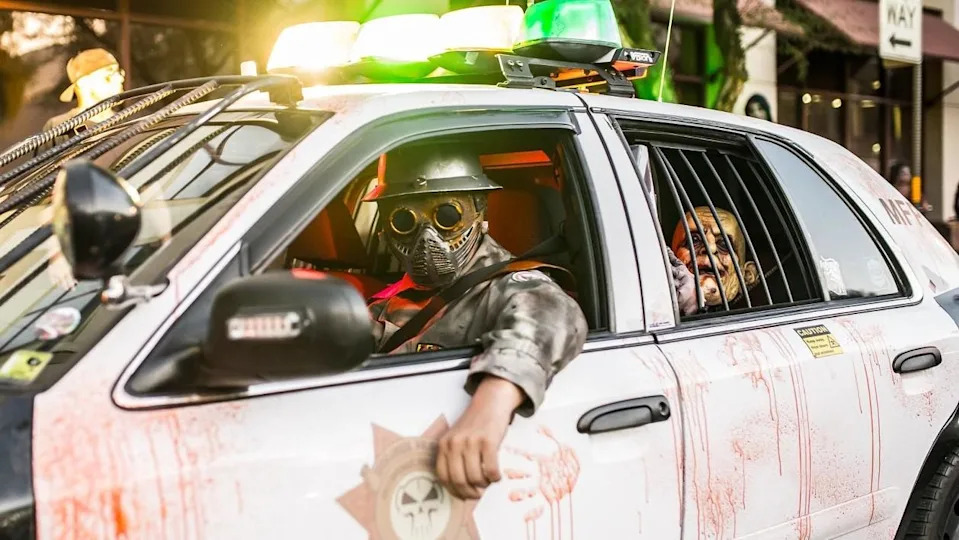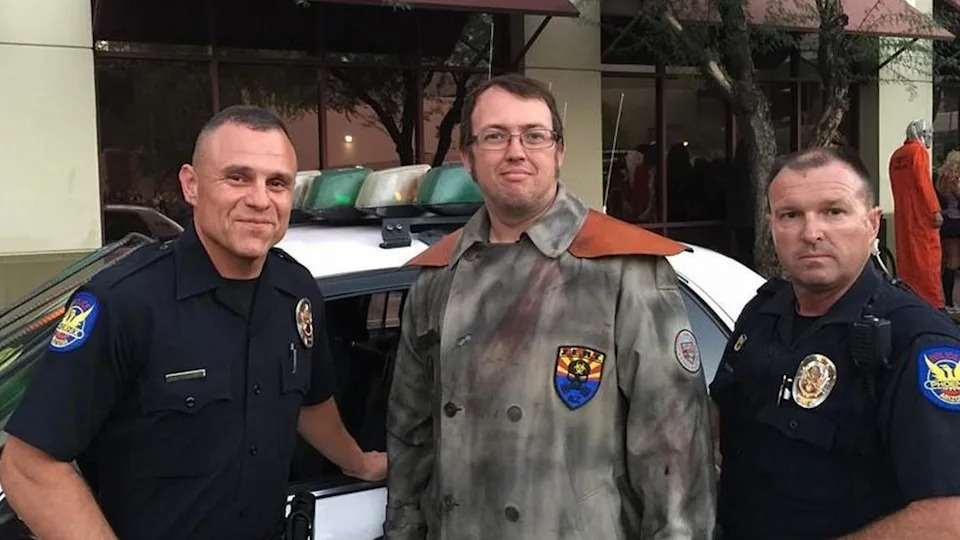
The Atlantic Daily, a newsletter that guides you through the biggest stories of the day, helps you discover new ideas, and recommends the best in culture. Sign up for it here.
A college senior returning to classes this fall has spent nearly their entire undergraduate career under the shadow—or in the embrace—of generative AI. ChatGPT first launched in November 2022, when that student was a freshman. As a department chair at Washington University in St. Louis, I witnessed the chaos it unleashed on campus. Students weren’t sure what AI could do, or which uses were appropriate. Faculty were blindsided by how effectively ChatGPT could write papers and do homework. College, it seemed to those of us who teach it, was about to be transformed.
But nobody thought it would happen this quickly. Three years later, the AI transformation is just about complete. By the spring of 2024, almost two-thirds of Harvard undergrads were drawing on the tool at least once a week. In a British survey of full-time undergraduates from December, 92 percent reported using AI in some fashion. Forty percent agreed that “content created by generative AI would get a good grade in my subject,” and nearly one in five admitted that they’ve tested that idea directly, by using AI to complete their assignments. Such numbers will only rise in the year ahead.
“I cannot think that in this day and age that there is a student who is not using it,” Vasilis Theoharakis, a strategic-marketing professor at the Cranfield School of Management who has done research on AI in the classroom, told me. That’s what I’m seeing in the classes that I teach and hearing from the students at my school: The technology is no longer just a curiosity or a way to cheat; it is a habit, as ubiquitous on campus as eating processed foods or scrolling social media. In the coming fall semester, this new reality will be undeniable. Higher education has been changed forever in the span of a single undergraduate career.
“It can pretty much do everything,” says Harrison Lieber, a WashU senior majoring in economics and computer science (who took a class I taught on AI last term). As a college student, he told me, he has mostly inhabited a world with ChatGPT. For those in his position, the many moral questions that AI provokes—for example, whether it is exploitative, or anti-intellectual, or ecologically unsound—take a back seat to the simple truth of its utility. Lieber characterized the matter as pragmatic above all else: Students don’t want to cheat; they certainly don’t want to erode the value of an education that may be costing them or their family a small fortune. But if you have seven assignments due in five days, and AI could speed up the work by tenfold for the cost of a large pizza, what are you meant to do?
In spring 2023, I spoke with a WashU student whose paper had been flagged by one of the generally unreliable AI detectors that universities have used to stem the tide of cheating. He told me that he’d run his text through grammar-checking software and asked ChatGPT to improve some sentences, and that he’d done this to make time for other activities that he preferred. “Sometimes I want to play basketball,” he said. “Sometimes I want to work out.”
[Read: The first year of AI college ends in ruin]
His attitude might have been common among large-language-model users during that first, explosive year of AI college: If a computer helps me with my paper, then I’ll have more time for other stuff. That appeal persists in 2025, but as these tools have taken over in the dorms, the motivations of their users have diversified. For Lieber, AI’s allure seems more about the promise of achievement than efficiency. As with most students who are accepted to and graduate from an elite university, he and his classmates have been striving their whole life. As Lieber put it, if a course won’t have “a tangible impact on my ability to get a good job,” then “it’s not worth putting a lot of my time into.” This approach to education, coupled with a “dismal” outlook for postgraduate employment, justifies an ever more ferocious focus on accomplishment. Lieber is pursuing a minor in film and media studies. He has also started a profitable business while in school. Still, he had to network hard to land a good job after graduation. (He is working in risk management.)
Da’Juantay Wynter, another rising senior at WashU who has never seen a full semester without AI, told me he always writes his own essays but feels okay about using ChatGPT to summarize readings, especially if he is in a rush. And like the other students I spoke with, he’s often in a rush. Wynter is a double major in educational studies and American-culture studies; he has also served as president of the Association of Black Students, and been a member of a student union and various other campus committees. Those roles sometimes feel more urgent than his classwork, he explained. If he does not attend to them, events won’t take place. “I really want to polish up all my skills and intellect during college,” he said. Even as he knows that AI can’t do the work as well, or in a way that will help him learn, “it’s always in the back of my mind: Well, AI can get this done in five seconds.”
Another member of his class, Omar Abdelmoity, serves on the university’s Academic Integrity Board, the body that adjudicates cases of cheating, with AI or otherwise. In almost every case of AI cheating he’s seen, Abdelmoity told me, students really did have the time to write the paper in question—they just got stressed or preoccupied by other things, and turned to AI because it works and it is available. Students also feel the strain of soaring expectations. For those who want to go to medical school, as Abdelmoity does, even getting a 4.0 GPA and solid MCAT scores can seem insufficient for admission to the best programs. Whether or not this is realistic, students have internalized the message that they should be racking up more achievements and experience: putting in clinical hours, publishing research papers, and leading clubs, for example. In response, they seek ways to “time shift,” Abdelmoity said, so they can fit more in. And that’s at an elite private university, he continued, where the pressure is high but so is the privilege. At a state school, a student might be more likely to work multiple jobs and take care of their family. Those ordinary demands may encourage AI use even more.
In the end, Abdelmoity said, academic-integrity boards such as the one he sits on can only do so much. For students who have access to AI, an education is what you make of it.
If the AI takeover of higher ed is nearly complete, plenty of professors are oblivious. It isn’t that they fail to understand the nature of the threat to classroom practice. But my recent interviews with colleagues have led me to believe that, on the whole, faculty simply fail to grasp the immediacy of the problem. Many seem unaware of how utterly normal AI has become for students. For them, the coming year could provide a painful revelation.
Some professors I spoke with have been taking modest steps in self-defense: They’re abandoning online and take-home assignments, hoping to retain the purity of their coursework. Kerri Tobin, an associate professor of education at Louisiana State University, told me that she is making undergrads do a lot more handwritten, in-class writing—a sentiment I heard many times this summer. The in-class exam, and its associated blue book, is also on the rise. And Abdelmoity reported that the grading in his natural-science courses has already been rejiggered, deemphasizing homework and making tests count for more. These adjustments might be helpful, but they also risk alienating students. Being forced to write out essays in longhand could make college feel even more old-fashioned than it did before, and less connected to contemporary life.
Other professors believe that moral appeals may still have teeth. Annabel Rothschild, an assistant professor of computer science at Bard College, said she’s found that blanket rules and prohibitions have been less effective than a personal address and appeal to social responsibility. Rothschild is particularly concerned about the environmental harms of AI, and she reports that students have responded to discussions about those risks. The fact that she’s a scientist who understands the technology gives her message greater credibility. It also helps that she teaches at a small college with a focus on the arts.
Today’s seniors entered college at the tail end of the coronavirus pandemic, a crisis that once seemed likely to produce its own transformation of higher ed. The sudden switch to Zoom classes in 2020 revealed, over time, just how outmoded the standard lecture had become; it also showed that, if forced by circumstance, colleges could turn on a dime. But COVID led to little lasting change in the college classroom. Some of the students I spoke with said the response to AI has been meager too. They wondered why faculty weren’t doing more to adjust teaching practices to match the fundamental changes wrought by new technologies—and potentially improve the learning experience in the process.
Lieber said that he wants to learn to make arguments and communicate complex ideas, as he does in his film minor. But he also wonders why more courses can’t assess those skills through classroom discussion (which is hard to fake) instead of written essays or research papers (which may be completed with AI). “People go to a discussion-based class, and 80 percent of the class doesn’t participate in discussion,” he said.
The truth is that many professors would like to make this change but simply can’t. A lot of us might want to judge students on the merits of their participation in class, but we’ve been discouraged from doing so out of fear that such evaluations will be deemed arbitrary and inequitable—and that students and their parents might complain. When professors take class participation into account, they do so carefully: Students tend to be graded on whether they show up or on the number of times they speak in class, rather than the quality of what they say. Erin McGlothlin, the vice dean of undergraduate affairs in WashU’s College of Arts & Sciences, told me this stems from the belief that grading rubrics should be crystal clear in spelling out how class discussion is evaluated.
For professors, this approach avoids the risk of any conflicts related to accommodating students’ mental health or politics, or to bureaucratic matters. But it also makes the modern classroom more vulnerable to the incursion of AI. If what a student says in person can’t be assessed rigorously, then what they type on their computer—perhaps with automated help—will matter all the more.
Like the other members of his class, Lieber did experience a bit of college life before ChatGPT appeared. Even then, he said, at the very start of his freshman year, he felt alienated from some of his introductory classes. “I would think to myself, What the hell am I doing, sitting watching this professor give the same lecture that he has given every year for the last 30 years?” But he knew the answer even then: He was there to subsidize that professor’s research. At America’s research universities, teaching is a secondary job activity, at times neglected by faculty who want to devote as much time as possible to writing grants, running labs, and publishing academic papers. The classroom experience was suffering even before AI came onto the scene.
Now professors face their own temptations from AI, which can enable them to get more work done, and faster, just as it does for students. I’ve heard from colleagues who admit to using AI-generated recommendation letters and course syllabi. Others clearly use AI to write up their research. And still more are eager to discuss the wholesome-seeming ways they have been putting the technology to use—by simulating interactions with historical authors, for example, or launching minors in applied AI.
But students seem to want a deeper sort of classroom innovation. They’re not looking for gimmicks—such as courses that use AI only to make boring topics seem more current. Students like Lieber, who sees his college education as a means of setting himself up for his career, are demanding something more. Instead of being required to take tests and write in-class essays, they want to do more project-based learning—with assignments that “emulate the real world,” as Lieber put it.
But designing courses of this kind, which resist AI shortcuts, would require professors to undertake new and time-consuming labor themselves. That assignment comes at the worst possible time. Universities have been under systematic attack since President Donald Trump took office in January. Funding for research has been cut, canceled, disrupted, or stymied for months. Labs have laid off workers. Degree programs have cut doctoral admissions. Multi-center research projects have been put on hold. The “college experience” that Americans have pursued for generations may soon be over.
[Read: The end of college life]
The existence of these stressors puts higher ed at greater risk from AI. Now professors find themselves with even more demands than they anticipated and fewer ways to get them done. The best, and perhaps the only, way out of AI’s college takeover would be to embark on a redesign of classroom practice. But with so many other things to worry about, who has the time? In this way, professors face the same challenge as their students in the year ahead: A college education will be what they make of it too. At some point, everyone on campus will have to do the work.








Comments